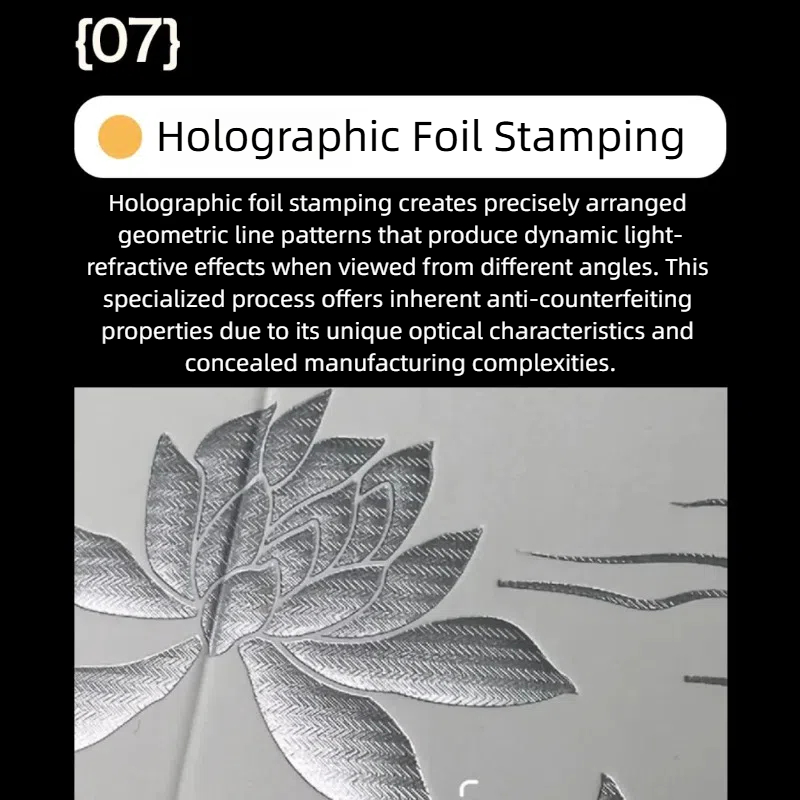

Holographic Foil Stamping
Holographic foil stamping creates precisely arranged geometric line patterns that produce dynamic light-refractive effects when viewed from different angles. This specialized process offers inherent anti-counterfeiting properties due to its unique optical characteristics and concealed manufacturing complexities.
Holographic foil stamping is a high-security decorative process that applies light-diffracting foil patterns to packaging substrates using heat and pressure. It produces dynamic, color-shifting optical effects that vary with viewing angles, serving both aesthetic and anti-counterfeiting purposes.
Key Features
✔ Optical Security – Micro-engraved holograms deter duplication
✔ Visual Impact – Rainbow color shifts (e.g., gold-to-green transitions)
✔ Brand Protection – Custom holographic patterns for authentication
✔ Versatility – Works with hot stamping, cold foil, or digital methods
Technical Process
Holographic Foil Types
2D/3D Holograms: Geometric patterns with depth illusion
Dot-Matrix: Micro-perforated security codes (≤0.1mm dots)
Kinetic Effects: Animated visuals when tilted
Tooling Requirements
Brass/Magnesium Dies: Precision-etched to match hologram relief
Silicon Counterforce: Even pressure distribution
Stamping Parameters
Temperature: 110–140°C (varies by foil brand)
Pressure: 25–40 kg/cm²
Speed: 1,000–3,000 impressions/hour
Substrate Compatibility
Best for: Coated paper, synthetic films, laminated boards
Avoid: Rough/uncoated surfaces (causes foil fragmentation)
Applications in Packaging
| Industry | Use Case | Example |
|---|---|---|
| Pharmaceutical | Tamper-evident seals | Pfizer vaccine packaging holograms |
| Liquor | Premium bottle neck bands | Johnnie Walker Blue Label security strips |
| Electronics | Authenticity labels | Apple AirPods case holographic stickers |
| Cosmetics | Luxury compact mirrors | Chanel No.5 limited-edition holographic lids |
Comparison: Holographic vs. Standard Metallic Foil
| Factor | Holographic Foil | Standard Metallic Foil |
|---|---|---|
| Light Interaction | Dynamic color shifts | Static reflection |
| Security Level | High (custom patterns possible) | Low (easily replicated) |
| Cost | 2–3× more expensive | Lower |
| Tooling | Requires hologram-specific dies | Generic dies acceptable |